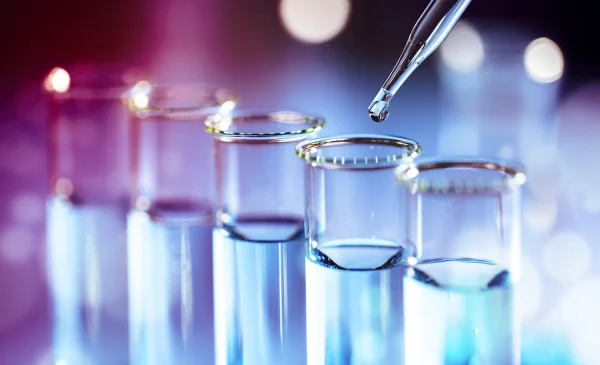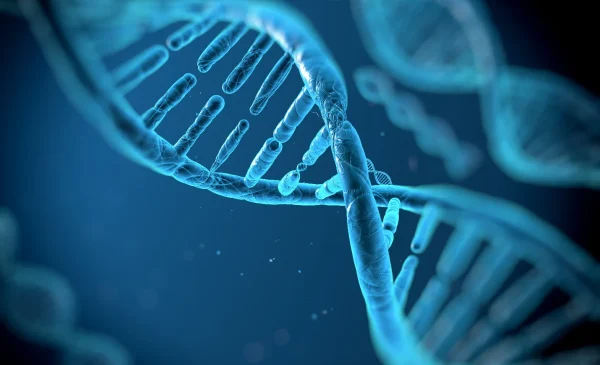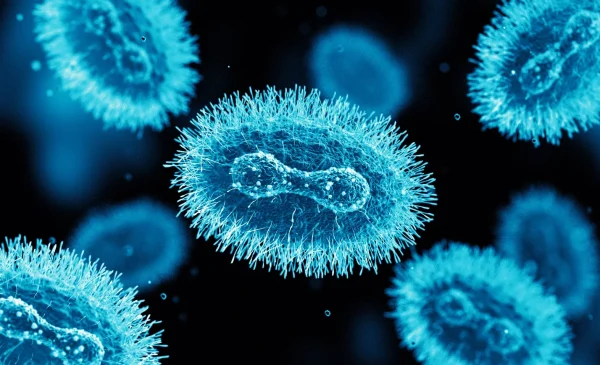How the body
responds to chemicals
Our bodies weren't designed to cope with the 1000’s of chemicals we encounter in daily life, so it’s probable that exposure to everyday chemicals can create more work for the liver and a create a burden for the body.
Exposure to everyday chemicals might result in microbiome changes and even have an impact on the expression of genes.

The liver is our natural defence against everyday chemicals and toxins. It balances our energy, blood protein synthesis, regulates the immune system, and detoxes chemical and toxic substances.
The liver filters blood coming in from the digestive tract before passing it to the rest of the body. It breaks down waste products and toxins, allowing the body to carry out healthy functions.
How are chemicals expelled from the body?
Chemicals entering the body are either water or fat soluble, and the body treats both as toxins. Fat soluble toxins are more troublesome because they bind themselves to fatty tissue making it harder for the liver to break them down.
The liver modifies the structure of toxins in a process called biotransformation where most fat-soluble toxins are changed to water soluble, then passed through the kidneys, and excreted in urine as metabolites.
For example, when phthalates are absorbed into the body, they make their way into blood and other bodily fluids. The detoxification process breaks them down into metabolites which can then be expelled in urine.
Body burden
To clear toxins from the body the liver must work efficiently, but exposure to chemicals and toxins can place it under strain. When toxins can’t be broken down to be expelled easily by the body, they are sometimes stored in the body’s fatty, or adipose tissue. It’s a similar process to storing excess calories from food or alcohol in fatty tissue.
Body Burden describes this concentration of chemicals and toxins stored in body tissue, blood, or bones. They may remain in body tissue for many years after the source of exposure has been removed. This accumulation of chemicals and other toxins can create a burden for the body’s detoxification system.
It’s suspected that body burden might lead to compromised liver function and other key organs including the heart, lungs, and endocrine system.
Body burden is difficult to measure directly, but metabolite markers of everyday chemicals that have been processed and expelled by the body can be measured in urine. Metabolite screening can indicate recent exposures and how well the body is getting rid of them.
The microbiome (gut)
We have more than 3 million genes in our microbiome, or gut, which breaks down food and drink to use as energy. It also plays a vital role in maintaining immune system health and fighting infection. Microbiome health is heavily influenced by what we eat and drink, and what we encounter in our environment, including chemicals.
Evidence is emerging that pesticides and herbicides such as glyphosate once ingested, can adversely affect the gut microbiota by changing its abundance and composition, causing an imbalance.
Environmental pollutants mostly affect the beneficial microbes in our gut, by reducing the levels of ‘good’ bacteria which aid in digestion. These imbalances in gut microbiome can lead to a poorly functioning digestive tract.
Genetic factors
Differences in genetic makeup might influence how the human body responds to exposures to everyday chemicals and pollutants. These differences might be able to explain why only some, not all people become unwell.
Our complete set of genetic material, or DNA, is described as the genome and is made up of over 20,000 genes which supply instructions for every cell in the body. For example, when to grow, change cell type, start, speed up or slow sexual development, or respond to illness and disease.
Can gene patterns be disrupted by the environment?
Throughout our life our genome can change. If it becomes damaged, it can usually repair itself, but evidence is growing that exposure to chemicals and pollutants can influence how the genome works, which could help us understand differences in our susceptibility to illnesses, and how we respond to medications and treatments.
Genes work in response to factors such as lifestyle, diet and exercise, and the environment. These factors can bring about changes in the genome that are referred to as epigenetic changes; they are seen naturally throughout our lives. Some are reversible because they do not change the DNA itself but influence how the genes are expressed. Minor copy tweak in this para
These differences in environment could explain why two people with similar DNA, such as sisters who live in a similar environment with comparable exposures, might respond to everyday chemicals differently – where one sister might develop an illness, and the other remain well.
We can test your exposure to everyday chemicals



